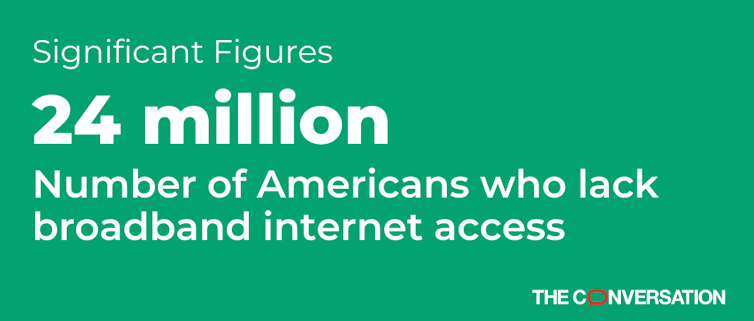
Amidst the flurry of social media updates about the COVID-19 pandemic, a chart illustrating the importance of flattening the curve has gone viral. The idea is that taking measures to slow the spread of COVID-19 lowers the chances of overwhelming hospitals and increases the chances that all of those who become ill will have access to treatment. The logic behind flattening the COVID-19 curve is intuitive – don’t panic, but be careful.
Unsurprisingly, the internet is playing a critical role in getting the word out to be careful and to help flatten the COVID-19 curve. Websites that present government data are giving people a sense of where cases are concentrated, and numerous other websites list numbers to call, symptoms to check for and tips for prevention. Increasingly universities are shifting courses online, businesses are asking employees to work from home and shoppers are ordering groceries online to minimize time in crowded spaces.
While the internet is an important resource in efforts to stay informed and proceed with daily lives during the COVID-19 pandemic, these online approaches to reducing risk are not available to everyone in the same way. As the Federal Communications Commission reports, more than 24 million Americans have no access to broadband internet, while the Pew Charitable Trusts projects 163 million Americans lack access to reliable broadband internet connections.
This digital divide falls along existing lines of socioeconomic inequality – those who are poorer and live in less affluent areas pay more for less reliable service. And while smartphones are more prevalent across all socioeconomic groups, they’re a poor alternative for broadband internet access for tasks like working from home or attending classes online.
The digital divide leaves some of the most vulnerable Americans – a significant proportion of the 163 million who lack access to a reliable broadband internet connection – at a significant disadvantage when it comes to accessing the real-time information people need to respond to COVID-19. This is a problem not only for people without broadband access, but also for society as a whole as we struggle to flatten the COVID-19 curve.
There will be many important lessons to be learned from the COVID-19 pandemic. A less obvious, yet nonetheless important, lesson is that the digital divide is complicating efforts to respond to the challenges society faces. Indeed, a poignant lesson from this pandemic is that finding ways to bridge the digital divide is quickly becoming a matter of life and death.
This article has been updated to correct the name of the Pew Charitable Trusts.
[Insight, in your inbox each day. You can get it with The Conversation’s email newsletter.]
Gregory Porumbescu, is assistant professor at the School of Public Affairs and Administration, Rutgers University Newark He received his PhD from the Graduate School of Public Administration at Seoul National University in 2013. His research interests primarily relate to public sector applications of information and communications technology, transparency and accountability, and citizens’ perceptions of public service provision. Dr. Porumbescu’s work has appeared in The Journal of Public Administration Research and Theory, Public Administration Review, Policy & Internet, and Public Performance and Management Review. He is also a senior researcher on an international project sponsored by the Social Sciences Korea foundation that examines government competitiveness. This project examines determinants of government competitiveness from an administrative perspective, focusing in particular upon understanding competitiveness across different contexts. This article is republished from The Conversation under a Creative Commons license. Read the original article.






